Gardenia Hedge —Creating, Maintaining, and Benefits of a Gardenia as a Hedge
Table of Contents
Is It Possible To Make a Hedge Out of Gardenias?
Yes, gardenias can be made into a hedge. Gardenias are versatile that can be used as hedge plants anywhere in the garden where their aroma can be enjoyed such as walkways, entryways, and fences. Low-growing spreading cultivars like ‘Radicans’ look well in borders or as groundcovers. However, this will require some time and effort on your part. First, you need to know what variety of gardenia can be used as hedges.
Gardenia Varieties to Try for Hedging
Scent Amazing Gardenia
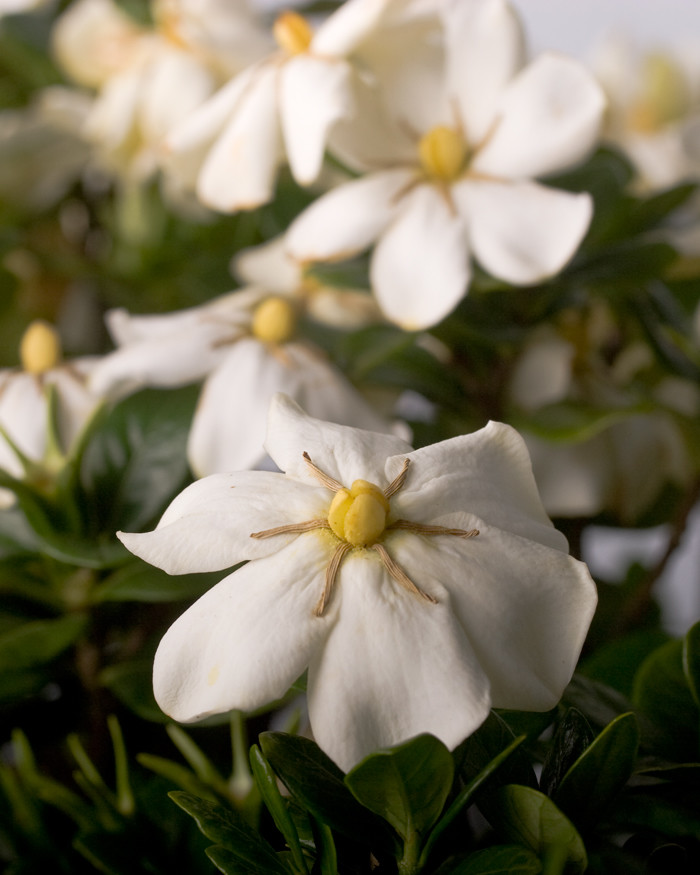
An evergreen flowering shrub whose height maturity reaches 2.5-3 ft and width of 3-4 ft. It grows bushy, dense, mounding, and upright. It has an extremely fragrant white large single flower with 3-4 inches size. The flowering period is from mid to late spring and summer. It has dark green foliage. Since they enjoy shelter from the midday afternoon heat and chilly northwesterly winds, they are ideally planted on the east side of the house or other buildings. It’s a great choice for sensory gardens and near windows or outdoor living areas where the aroma may be experienced.
Suggested Spacing: solid hedges should be spaced 3 feet apart, while plant spacing should be 6 feet or more apart
August Beauty Gardenia
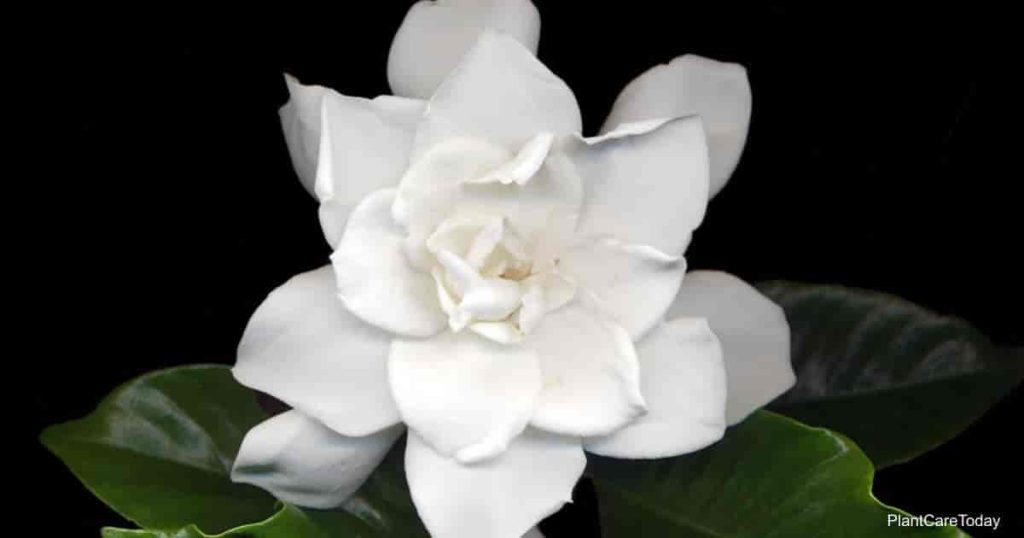
‘August Beauty’ is the largest-growing and most impressive Gardenia. It grows 6-8 ft with a width maturity of 4-6 ft, double large flower pure white double large flowers with 3 inches in diameter from mid-spring into summer, filling the garden with a wonderful aroma that is to die for. Flower cuttings and arrangements for indoor use are excellent choices for this variety. August Beauty’s arrow-shaped leaves are very shiny and dark green in color, and they contrast well with other plants that have a finer texture and lighter color foliage. It thrives on morning sun with filtered afternoon sun.
Suggested Spacing: 4 feet apart for solid hedge while 8 feet or more apart for plant spacing
Variegated Gardenia
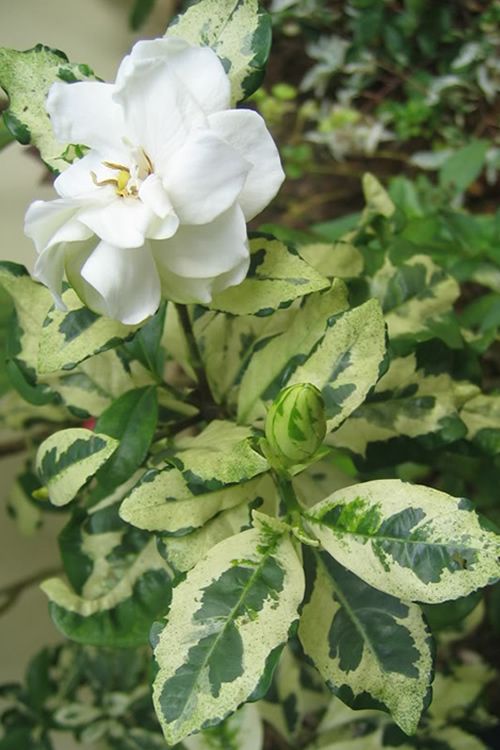
Variegated Gardenia is an excellent choice for use as an accent or in clusters in house foundation plantings and landscaping borders. It grows from 4-5 feet tall and 3-4 feet wide. It has large, glossy, variegated cream-white leaves edged in dark green. It prefers filtered sun or shade during afternoon hours. Furthermore, the Variegated Gardenia provides a profusion of waxy, ivory-colored double flowers from late spring through summer. These 2 to 3-inch diameter flowers blend in with the colorful foliage, but you’ll notice them when you catch a breath of their enticing sweet perfume. The growth rate is slower compared to other gardenia cousins.
Suggested Spacing: 3 feet apart for solid hedge while 8 feet or more apart for plant spacing
Other varieties:
Swan Princess Gardenia
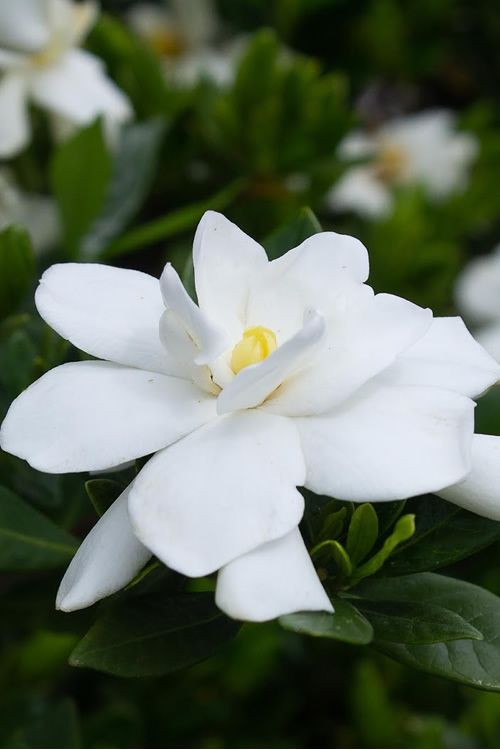
Height at Maturity: 2.5-3 feet
Width at Maturity: 3-4 feet
Growth Habit / Form: Bushy, Dense, Mounding, Upright
Suggested Spacing: 3 feet apart for mass planting and 7 feet or more for plant spacing
Swan Queen Gardenia
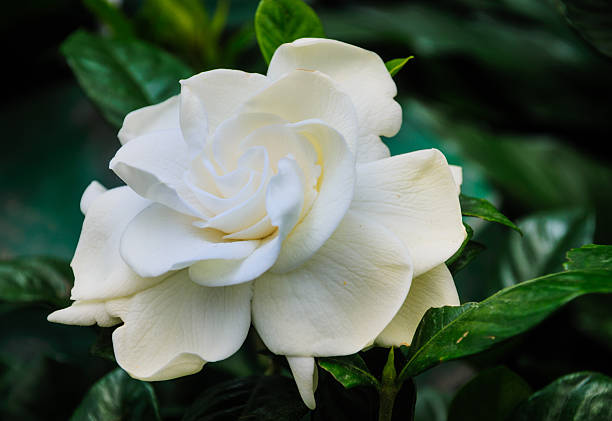
Height at Maturity: 4 feet
Width at Maturity: 5 feet
Growth Habit / Form: Dense, Mounding
Suggested Spacing: 3.5 feet apart for mass planting and 7 feet or more for plant spacing
Jubilation Gardenia
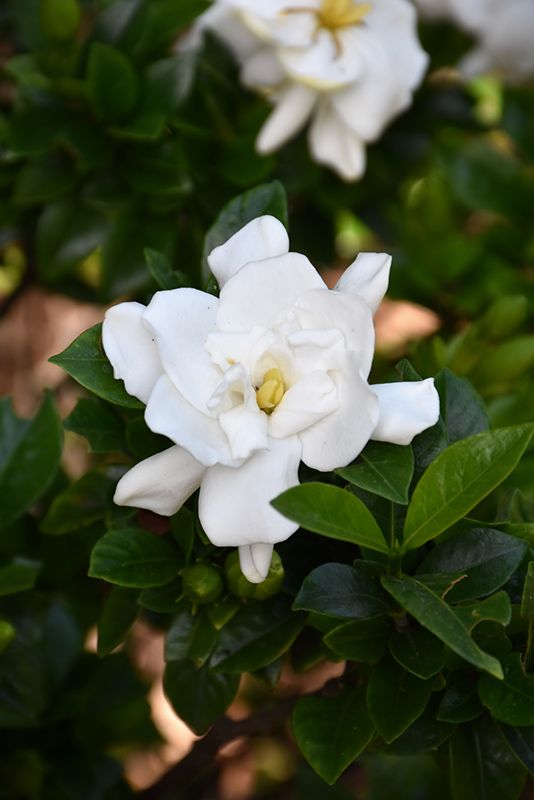
Height at Maturity: 3-4 feet
Width at Maturity: 3-4 feet
Growth Habit / Form: Bushy, Dense, Mounding, Upright
Suggested Spacing: 3 feet apart for mass planting and 6 feet or more for plant spacing
Frost Proof Gardenia
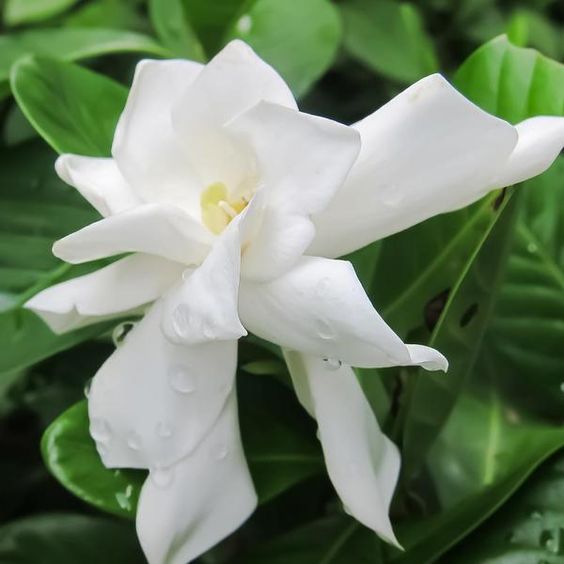
Height at Maturity: 3-4 feet
Width at Maturity: 3-4 feet
Growth Habit / Form: Bushy, Dense, Mounding, Upright
Suggested Spacing: 3 feet apart for mass planting and 6 feet or more for plant spacing
Buttons Gardenia
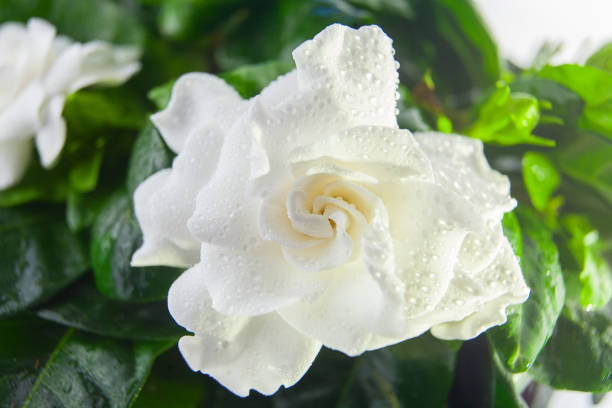
Height at Maturity: 18-24 inches
Width at Maturity: 30-36 inches
Growth Habit / Form: Bushy, Dense, Mounding
Suggested Spacing: 2-2.5 feet apart for mass planting and 5 feet or more for plant spacing
Fall In Love Cold Hardy Gardenia
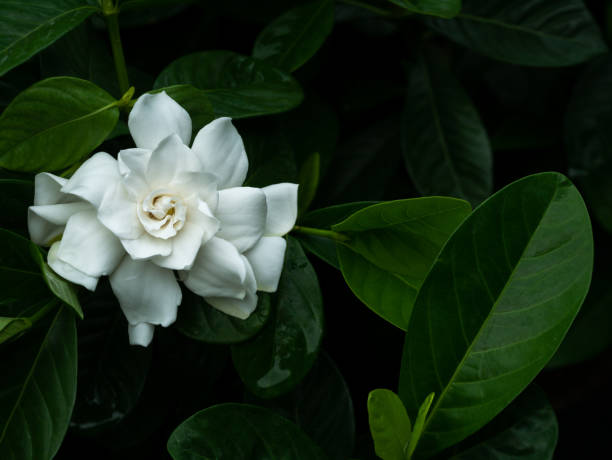
Height at Maturity: 4-5 feet
Width at Maturity: 5 feet
Growth Habit / Form: Bushy, Dense, Mounding
Suggested Spacing: 4 feet apart for mass planting and 8 feet or more for plant spacing
Celestial Star Gardenia
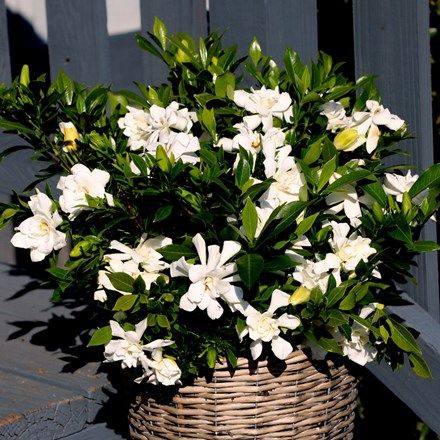
Height at Maturity: 3-4 feet
Width at Maturity: 3-4 feet
Growth Habit / Form: Bushy, Dense, Mounding, Upright
Suggested Spacing: 3-4 feet apart for mass planting and 6 feet or more for plant spacing
Swan Maiden Gardenia

Height at Maturity: 3-4 feet
Width at Maturity: 4-5 feet
Growth Habit / Form: Dense, Mounding
Suggested Spacing: 3-4 feet apart for mass planting and 8 feet or more for plant spacing
Double Mint Gardenia
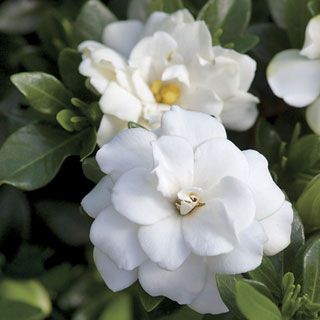
Height at Maturity: 3 feet
Width at Maturity: 3 feet
Growth Habit / Form: Bushy, Dense, Mounding, Rounded
Suggested Spacing: 2.5 feet apart for mass planting and 5 feet or more for plant spacing
Heaven Scent Gardenia
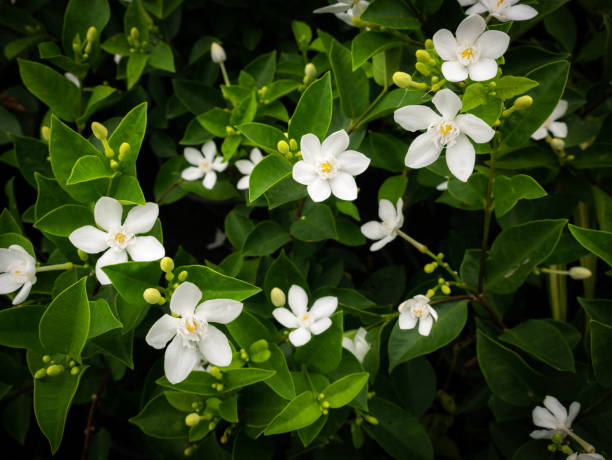
Height at Maturity: 3-4 feet
Width at Maturity: 3-4 feet
Growth Habit / Form: Dense, Upright
Suggested Spacing: 3 feet apart for mass planting and 6 feet or more for plant spacing
Diamond Spire Gardenia
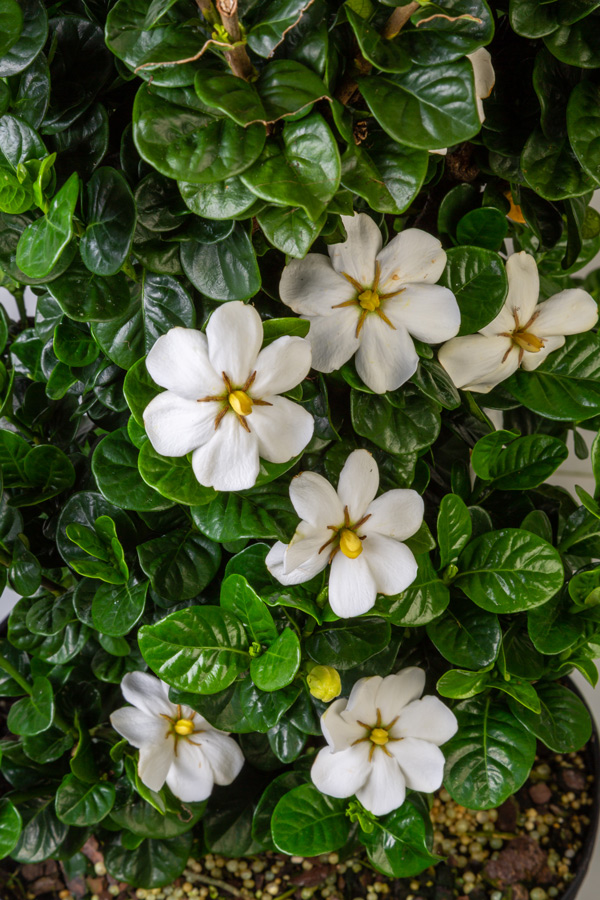
Height at Maturity: 3-4 feet
Width at Maturity: 2-3 feet
Growth Habit / Form: Dense, Bushy, Narrow, Upright
Suggested Spacing: 2 feet apart for mass planting and 6 feet or more for plant spacing
Fool Proof Gardenia
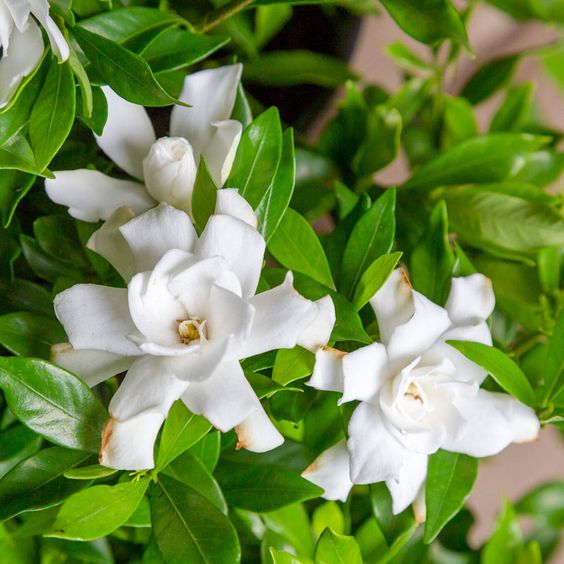
Height at Maturity: 3-4 feet
Width at Maturity: 3 feet
Growth Habit / Form: Bushy, Dense
Suggested Spacing: 2.5-3 feet apart for mass planting and 6 feet or more for plant spacing
Hardy Fragrant Daisy Gardenia Bush
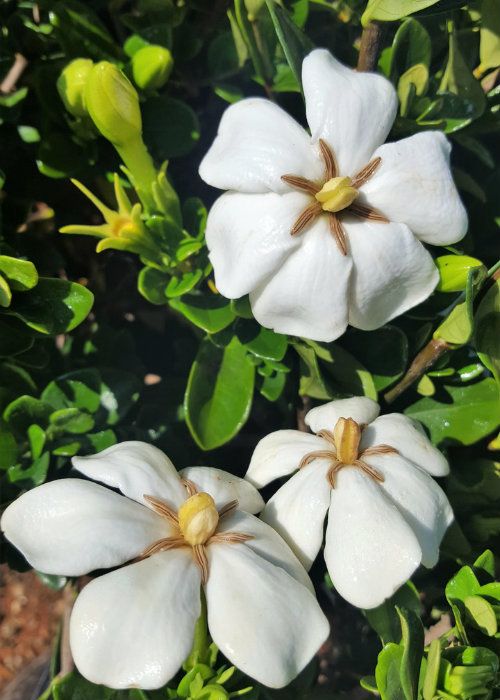
Height at Maturity: 3-4 feet
Width at Maturity: 3-4 feet
Growth Habit / Form: Bushy, Dense, Mounding, Upright
Suggested Spacing: 3 feet apart for mass planting and 5 feet or more for plant spacing
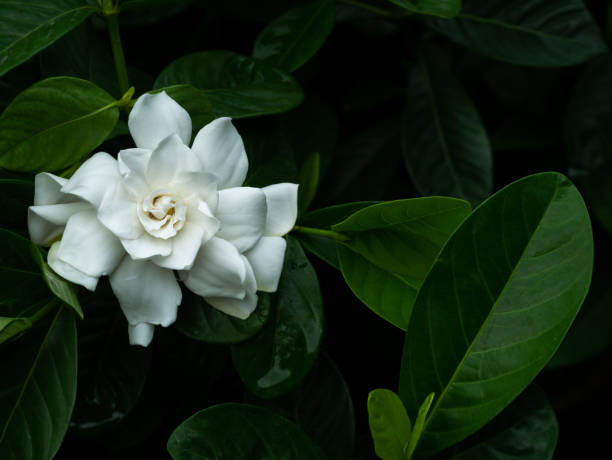
Dwarf Gardenia as Groundcover
Here are gardenia varieties as a groundcover. It provides dense cover to your ground.
Radicans Creeping Dwarf Gardenia
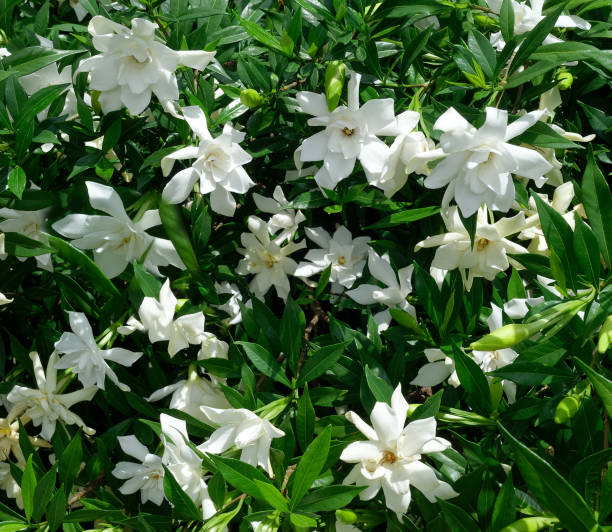
Height at Maturity: 2 feet
Width at Maturity: 3-4 feet
Growth Habit / Form: Bushy, Dense, Mounding
Suggested Spacing: 3 feet apart for mass planting and 6 feet or more for plant spacing
Variegated Creeping Dwarf Gardenia
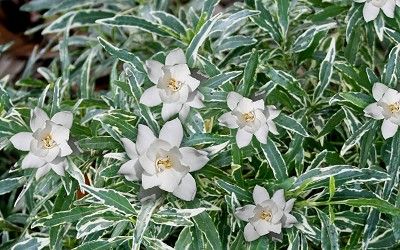
Height at Maturity: 12-18 inches
Width at Maturity: 2-3 feet
Growth Habit: Mounding, Trailing/Spreading
Foliage Color: Dark Green edged in white
Suggested Spacing: 2 feet apart for mass planting and 4 feet or more for plant spacing
‘Crescent Moon’ Dwarf Gardenia

Height at Maturity: 12-18″
Width at Maturity: 3-4′
Growth Habit / Form: Mounding, Trailing/Spreading
Foliage Color: Dark green with white streaks
Suggested Spacing: 3 feet apart for mass planting and 6 feet or more for plant spacing
For more information about gardenia varieties used as a hedge, you can visit Wilson Bros Gardens.
How to Plant a Gardenia as a Hedge?
Plan Ahead
Before you start to grow hedge in your garden, careful planning is a standard operating procedure. If it’s well-planned, you get better results and require less work as hedge hits maturity.
Select the Best Plant for Your Garden
Choose a hedge plant with a mature height that is close to your ideal hedge height. It will help reduce the amount of pruning necessary to keep your hedge in good condition. Remember to know what gardenia plants thrive in your region as not all gardenias are suited for specific climates.
Check the Spacing Requirements
After you’ve chosen your plants, determine the proper spacing. As a result, you will know the number of plants for your gardenia hedge.
Choose the Most Suitable Location for Your Hedge
It is very important to know the right location and light requirements for your selected gardenia species. Bad location results in a withered hedge.
Prepare the Garden Bed
Remove any undesirable plants or any objects before you start to plant. Dig a hole twice as big as the plant’s root ball.
Plant the Gardenia According to Suggested Plant Spacing
Fill the hole with garden soil and plant the gardenia according to its space requirements. Make sure to cover enough the roots.
Water and Fertilize your Gardenia
Water your gardenia well. Keep it always moist but not too soggy. Add an appropriate amount of high-quality fertilizer.
Always Check
Maintain the health and look of your gardenia by keeping an eye on it especially on pests and diseases.
Hedge Maintenance
There are a few things that you can do to maintain your gardenia hedge. One of the most important things is to water it regularly. Make sure to water it thoroughly and allow the soil to dry out between waterings. You should also fertilize it every couple of months with high-quality plant food. Gardenias grow best in warm climates with plenty of sunlight and moist soil. Gardenias prefer well-drained soil that is rich in organic matter and pH 6.0-7.5. Gardenias should be fertilized every two weeks during the growing season with a balanced fertilizer that contains nitrogen, phosphorus, potassium, and magnesium.
Another important thing is to prune your gardenia occasionally. Pruning will help remove dead or diseased branches, as well as promote new growth. You should also trim off any brown leaves that may be developing.
Guide to Pruning Gardenia Hedge and Grow Fuller
It might appear to be easy but it really needs extra care when it comes to pruning hedges. Here are a few guidelines on how to maintain a hedge.
Know When to Start Pruning
To prune a gardenia you need to know the bloom cycle. The ideal time to prune your gardenia is right after the bloom period ends. While your hedge is still young, lightly trims it with only 2cm. This would encourage dense growth all over the plant instead of growing leggy and taller.
How Often to Prune
Pruning is essential after your hedge has achieved the correct height to maintain it the size and form you wish. The frequency with which this must be done is determined by the rate at which your hedge grows, which is controlled by climate, growth circumstances, and the type of plant chosen. Some hedges in warm areas may require monthly pruning throughout the hot, rainy growth seasons, but in colder climes, the same plant may only require 3 or 4 prunings each year to maintain a tight hedge.
How Much to Prune
As a general guideline, unless you’re recovering an old hedge, you should never prune back into bare wood. For most hedges, just approximately 5-10cm of growth should be cut each time. As a general guideline, unless you’re recovering an old hedge, you should never prune back into bare wood. This may be much less for a very tight formal hedge.
Getting the Right Shape
The majority of hedges are manicured into generally rectangular shapes with variable heights. Once the hedge has the size and form you want, a little regular pruning will allow you to keep the shape straight by following the hedge’s current line. If the hedge needs more pruning to regain its shape, you can use a string line to assist maintain the line you are trimming to straight. If you are unsure, get a professional to shape the hedge, and you will discover that keeping the design will be much easier.
When trimming the vertical edge of a hedge, make sure the bottom is somewhat broader than the top. It is not uncommon for the reverse to occur without design. Lower areas of the hedge will receive less daylight than the top, resulting in poorer leaf coverage on lower parts. By making the base of the hedge a bit broader than the top, the lower branches can catch enough sunlight to stay leafy.
In an upward sweep, cut the vertical side of a hedge. A downward sweep pushes branches down into the hedge, resulting in an irregular cut.
Tidying up prunings
Brush the top of the hedge with your fingers or a gentle grass rake after cutting it to remove any leaves. When leaves die on top of the hedge, they not only seem unattractive, but also obstruct sunlight from reaching the young leaves below, resulting in barren patches.
Like any other plant, gardenias are susceptible to pests and diseases. If one plant suffers from a pest or disease, the entire hedges become affected. It would take years to fill the dead plant and lower the chances of success. Thus, preventive measures are a must.
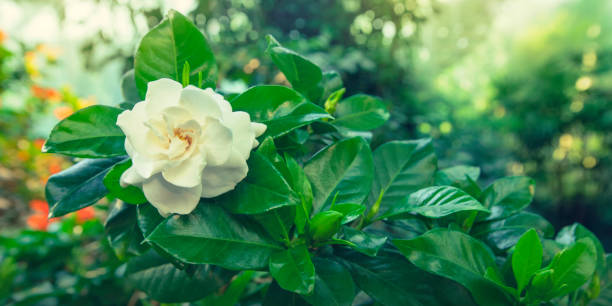
Benefits of Having Gardenia Hedge
Unlike fences and walls, a hedge has a lot of practical functions as well as adds beauty, and has environmental benefits. You can even trim them in your desired shapes and sizes. Here are the benefits of having a gardenia hedge:
Creates an attractive natural barrier around your property
Natural barriers can be very attractive additions to your property, as they provide a natural way of defending it from the outside world. By planting gardenia near your property’s edge, you can create a strong physical barrier that is unlikely to be easily broken through and help keep your property protected from invaders.
Forms an effective windbreak that stops the winds from inflicting harm to your property
Forms an effective windbreak that stops the winds from inflicting harm to your property. A windbreak can help to protect your property from the harmful effects of wind. By erecting a windbreak, you can prevent winds from blowing across your property, potentially damaging your property or causing a disturbance in the air that could be harmful to you and your pets.
Provides privacy for you and your family
Hedges can hide the inside of the house from an outsider’s eyes when you want to open your window blinds and curtains for fresh air. They can help you to securely hide your assets and areas of the property from other people in the area. By planting them near your house, they will provide a natural form of protection that cannot easily be broken through.
Helps reduce noise levels in neighborhoods by absorbing sound waves
Plants do absorb sounds. Thus, it can help reduce noise level from the outside.
Help improve air quality by trapping dust, pollen, and other pollutants
Help improve air quality by trapping dust, pollen, and other pollutants. Planting a gardenia hedge close to where you live helps trap any pollens or airborne particles that may be floating around your area producing an airy particle that makes people feel uncomfortable in their environment
Increases species diversity in your neighborhood
It attracts birds and insects like butterflies and bees as well as provides food and shelter to other wildlife in your garden.
Provides shade during hot weather
Hedge helps to reduce exposure of your home to the sun’s harmful rays. It provides shade during hot weather by absorbing sunlight and preventing it from reaching the ground. This can help to reduce the amount of heat that is radiated up from the ground, which can in turn reduce the amount of energy that is needed to maintain a comfortable temperature.
Reduces the effects of wind and weather damage on buildings and other structures
Hedges are helpful in reducing the effects of wind and weather damage on buildings or other structures because they can block cold air drafts that might cause cracks near windows which would allow water to seep through them. They act as barriers that can reduce the impact of strong wind and prevent debris from breaking the windows.
